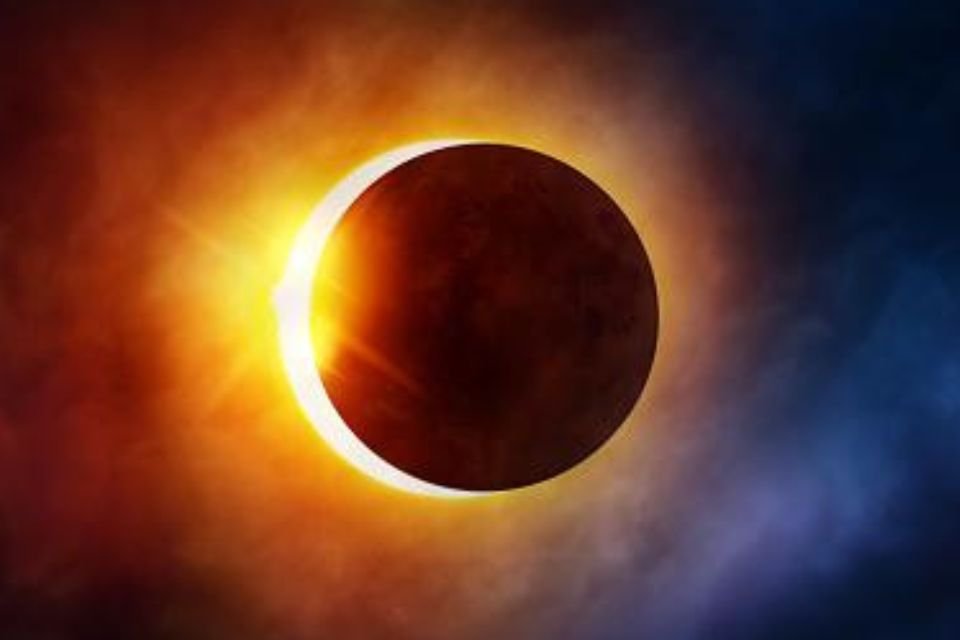Every week, TecMundo and #AstroMiniBR bring together the best and most relevant astronomy curiosities produced by collaborators From Twitter profile To spread astronomy knowledge. You can check out this week’s news below!
#1: Solar eclipse on October 14
Next Saturday, October 14 An annular eclipse will occur, a fascinating and rare celestial display An event that occurs when the Moon is farthest from our planet in its orbit around the Earth. During this astronomical event, the Moon does not completely cover the solar disk, leaving a bright ring at the edge known as the “ring of fire”.
This phenomenon is due to the unique combination of two factors: the eccentricity of the Moon’s orbit and the varying distance between the Earth and the Moon along its elliptical path. When a precise alignment occurs between the Sun, Moon, and Earth, observers in the affected area may witness the solar disk briefly transform into a glowing ring. It is crucial to be in the appropriate viewing range to appreciate an annular solar eclipse, as this cosmic feature cannot be seen everywhere.
On the 14th, the event can be watched from all over Brazil, but spectators in the North and Northeast of the country will have a privileged view, Including the possibility of seeing the entire annular eclipse, as in the states of Rio Grande do Norte, Paraíba and Ceará. Astronomers and science enthusiasts are eagerly awaiting this event, planning their observations based on eclipse orbit projections, which you can see in the image above.
But remember: Never look directly at the Sun! The eclipse must be viewed with special protective lenses and glasses to avoid eye damage!
#2: How big is the Sun?
The Sun, our main star at the center of the solar system, is a truly gigantic entity compared to the celestial bodies orbiting it. With an impressive diameter of approximately 1.4 million kilometers, the Sun dwarfs the Earth on a massive scale.
To get a clearer idea, approximately 1.3 million Earth-sized planets could be placed in the space within the Sun. When we compare this size to that of the Moon, the comparison becomes even more impressive: About 64 million of our natural satellites fit inside the Sun.
These enormous dimensions not only highlight the size of the Sun in our cosmic neighborhood, but also the overwhelming influence that this star exerts on the planets in its orbit.
The Sun is not only a constant source of fascination and scientific research, but also a vital source of light and energy for our planet, the most fundamental part of our existence in the Cosmos.
#3: The Moon’s turbulent past
The surface of our natural satellite, the Moon, whose fascination and admiration has been lost to history, is a panorama of arid and intriguing beauty. It consists mainly of lunar regolith, a layer of rock fragments and fine dust. The moon offers a diverse topography with smooth plains and rugged mountains.
Its chemical composition consists of silicates, aluminum and iron like Earth, but unlike our planet it does not show the presence of significant amounts of water. The notable absence of a dense atmosphere has made the Moon susceptible to direct meteor impacts for millions of years, resulting in the heavily cratered landscape we see in the night sky every month.
This abundance of craters on the Moon is also a testament to the cosmic history of our solar system. Orbital dynamics of small bodies provide a record of a past that was more turbulent and less stable than today.
Lunar craters vary in size and depth from small concavities to huge basins like Tycho Crater, one of the most famous and beloved by amateur astronomers!
Always stay up to date with astronomical curiosities at TecMundo!
Source: Tec Mundo
I’m Blaine Morgan, an experienced journalist and writer with over 8 years of experience in the tech industry. My expertise lies in writing about technology news and trends, covering everything from cutting-edge gadgets to emerging software developments. I’ve written for several leading publications including Gadget Onus where I am an author.













